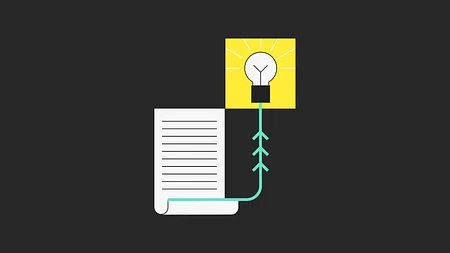How to fix the homebuying nightmare

Delivered straight to your inbox
Get each edition of Unfiltered - our no-BS, uncensored analysis of fintech news and hot topics sent to your inbox each fortnight.
Find out more
There’s no place like home. There’s no place like home. How many times do we need to click our heels together before buying a home becomes a reality?
Probably until those heels are worn through, or at least until we can confidently navigate the complexities that surround the homebuying process. Frankly, it isn’t fit for purpose, and top-to-bottom change is a matter of urgency.
What’s wrong with the homebuying market?
For those trying to buy a house, the goal now seems further and further away thanks to ballooning interest rates and a devastating cost-of-living crisis.
This summer, interest rates on UK mortgages rose at their fastest pace in a decade, thanks to increases in the Bank of England’s base rate aimed at taming inflation. Then financial turmoil caused by the government’s disastrous—and now mostly scrapped—mini-budget in September forced banks to suspend hundreds of mortgage products, leading to a crash in the availability of loans.
There are so many different factors and parties involved in the homebuying process that we feel lost, we feel alone, and generally confused by the whole thing. Here are four reasons the process isn’t sustainable and what lenders need to do to fix it.
1. Jargon and complex terminology need to get in the bin
Mortgage lending and the whole homebuying process involve a lot of financial and legal terms that are difficult to understand. Terms like ‘amortisation’, ‘variable rates’, and ‘loan-to-value’ are confusing if you're not familiar with them. The process itself involves a lot of paperwork, including contracts, deeds, and mortgage documents. It can be completely overwhelming. The sheer deluge of jargon and documents can lead buyers to make a decision that is not in their best interest, create difficulty in making mortgage payments or be bound by misunderstood legal obligations.
The sheer deluge of jargon and documents can lead buyers to make a decision that is not in their best interest...
2. Too many options and no obvious fit
There are so many different types of financing options available, each with its own set of terms, conditions, implications and fees. Whether that’s mortgages, shared ownership schemes or government help schemes, it’s impossible to know what the best option is for you financially and for your lifestyle. Additionally, borrowers' financial needs are increasingly nuanced, and the structure of their income demands flexibility. Traditional lending feels rigid and lacks the flexibility to accommodate today's buyers' evolving needs. This lack of flexibility contrasts the dynamic nature of the modern workforce, who may not qualify for traditional mortgages due to factors like income or credit history. The focus on traditional lending makes it near-impossible for many borrowers to secure financing, and the surplus of options makes it hard for borrowers to make an informed decision on the best option for their needs.
3. The emotional and financial commitment is massive
Buying a property is a long-term financial commitment, as mortgages are commonly a 30-year term. This can be intimidating for some people, especially in today’s economic climate. Securing the necessary financing can mean taking an uncomfortable look at your finances and assessing general readiness for homeownership. Additionally, the demand for homes in the UK often exceeds the supply, leading to extreme competition for properties and higher prices. As a result, you can get emotionally invested in a property and lose it all too easily.
4. The process is outdated and convoluted
To buy a home, the buyer has to navigate a complex financial and legal process involving multiple parties and layers of complexity. Securing a mortgage is challenging as each borrower needs to meet certain requirements, like a good credit score and reliable income. To top it all off, there are so many legal steps, like conveyancing and exchanges of contracts, that can be extremely confusing and time-consuming. And paper is still used. Yes, really.
So not only is homeownership increasingly unlikely for many, but it’s also incredibly complex, emotional and a downright expensive mistake to make if a poor decision is made. So what should lenders do to help?
Simplify. Simplify. Simplify.
Simplify the terms and the overall process to improve buyers’ understanding, increase transparency, improve customer satisfaction, and reduce the risk of poor decision-making. Simplifying the terms helps borrowers make more informed decisions by allowing them to compare and choose products that best suit their needs. Once the correct mortgage product has been chosen, transparency throughout the process is key to building trust and confidence that the property will be secured and that everything is going according to plan. A great way to improve the end-to-end process is through partnerships across the homebuying value chain, leveraging proptechs, insurtechs, and legaltechs to streamline the process and improve it for all.
Simplifying the terms helps borrowers make more informed decisions...
Prepare and educate
Take the time to prepare. Educate borrowers throughout the process so they can make informed decisions. Empower them to make decisions that consider their individual circumstances both now and in the future. There’s a responsibility to help prospective borrowers be realistic about what they can comfortably afford within these market conditions and to educate them on their personal affordability to make sure they are ready. For the average consumer, it’s hard to know how much you can afford and what your affordability ratio should be - this is an expense-to-income ratio which is used to compare income against liabilities. This calculation and affordability criteria should be clearly communicated and transparent. To mitigate any risks of not qualifying, lenders should be proactive and intervene earlier to help each individual take the necessary steps for becoming an attractive borrower and a successful homeowner.
Offer flexible finance options
Homeownership can feel like an impossible dream for many, but flexible financing options would help make it more accessible to new buyers and borrowers who may have otherwise been unable to secure lending. Market conditions are changing, so financing needs to adapt to cope with fluctuations in interest rates and changes in borrower demand.
My unfiltered opinion
If only buying a home was as easy as clicking your heels. There’s so much to be done to fix this broken process, and lenders have a massive responsibility to help their customers navigate the increasingly rocky terrain so that it doesn’t feel like trying to climb a mountain with a toothpick. Offer guidance, flexibility, and education, or condemn millions to despair.
Good thing that 11:FS is dropping a report on homebuying very soon. Keep your eyes peeled.



